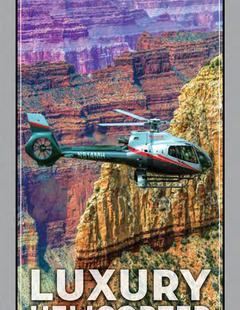Within Joshua Tree National Park lies two different deserts, the Mojave Desert and the Colorado Desert. Take the time to look through the differnent tabs below to gain a better idea of the layout of the park and the best way for you to approach a visit to the park.

Go-California




Joshua Trees

Request Free Visitor Guides
1
Select a Free Visitor Guide below2
Complete the form to receive your guides by mailBelow are the Free Visitor Guides for Joshua Tree National Park Area. Click here to view all the guides avialable for California.
General Interest Guides



Maverick Helicopters Nevada, Arizona, Hawaii, and California
Maverick Helicopters
| struct | |||||||||||||||||||||||||||||||||||||||||||||||||||||||||||||||||||||||||||||||||||||||||||||||||||||||||||||||||||||||||||||||||||||||||||||||||||||||||||||||||||||||||||||||||||||||||||||||||||
|---|---|---|---|---|---|---|---|---|---|---|---|---|---|---|---|---|---|---|---|---|---|---|---|---|---|---|---|---|---|---|---|---|---|---|---|---|---|---|---|---|---|---|---|---|---|---|---|---|---|---|---|---|---|---|---|---|---|---|---|---|---|---|---|---|---|---|---|---|---|---|---|---|---|---|---|---|---|---|---|---|---|---|---|---|---|---|---|---|---|---|---|---|---|---|---|---|---|---|---|---|---|---|---|---|---|---|---|---|---|---|---|---|---|---|---|---|---|---|---|---|---|---|---|---|---|---|---|---|---|---|---|---|---|---|---|---|---|---|---|---|---|---|---|---|---|---|---|---|---|---|---|---|---|---|---|---|---|---|---|---|---|---|---|---|---|---|---|---|---|---|---|---|---|---|---|---|---|---|---|---|---|---|---|---|---|---|---|---|---|---|---|---|---|---|---|
| Cause |
|
||||||||||||||||||||||||||||||||||||||||||||||||||||||||||||||||||||||||||||||||||||||||||||||||||||||||||||||||||||||||||||||||||||||||||||||||||||||||||||||||||||||||||||||||||||||||||||||||||
| DataSource | spacey_live | ||||||||||||||||||||||||||||||||||||||||||||||||||||||||||||||||||||||||||||||||||||||||||||||||||||||||||||||||||||||||||||||||||||||||||||||||||||||||||||||||||||||||||||||||||||||||||||||||||
| Detail | The connection attempt failed. | ||||||||||||||||||||||||||||||||||||||||||||||||||||||||||||||||||||||||||||||||||||||||||||||||||||||||||||||||||||||||||||||||||||||||||||||||||||||||||||||||||||||||||||||||||||||||||||||||||
| ErrorCode | 08001 | ||||||||||||||||||||||||||||||||||||||||||||||||||||||||||||||||||||||||||||||||||||||||||||||||||||||||||||||||||||||||||||||||||||||||||||||||||||||||||||||||||||||||||||||||||||||||||||||||||
| Message | Error Executing Database Query. | ||||||||||||||||||||||||||||||||||||||||||||||||||||||||||||||||||||||||||||||||||||||||||||||||||||||||||||||||||||||||||||||||||||||||||||||||||||||||||||||||||||||||||||||||||||||||||||||||||
| NativeErrorCode | 0 | ||||||||||||||||||||||||||||||||||||||||||||||||||||||||||||||||||||||||||||||||||||||||||||||||||||||||||||||||||||||||||||||||||||||||||||||||||||||||||||||||||||||||||||||||||||||||||||||||||
| RootCause |
|
||||||||||||||||||||||||||||||||||||||||||||||||||||||||||||||||||||||||||||||||||||||||||||||||||||||||||||||||||||||||||||||||||||||||||||||||||||||||||||||||||||||||||||||||||||||||||||||||||
| SQLState | 08001 | ||||||||||||||||||||||||||||||||||||||||||||||||||||||||||||||||||||||||||||||||||||||||||||||||||||||||||||||||||||||||||||||||||||||||||||||||||||||||||||||||||||||||||||||||||||||||||||||||||
| Sql | select distinct country from geography_states order by country | ||||||||||||||||||||||||||||||||||||||||||||||||||||||||||||||||||||||||||||||||||||||||||||||||||||||||||||||||||||||||||||||||||||||||||||||||||||||||||||||||||||||||||||||||||||||||||||||||||
| StackTrace | coldfusion.tagext.sql.QueryTag$DatabaseQueryException: Error Executing Database Query. at coldfusion.tagext.sql.QueryTag.doEndTag(QueryTag.java:641) at cftravelPlannerRequest2d20152ecfm1315540537._factor10(C:\Earthdiver Dropbox\Go Travel Sites\gosites\webroot\platform\instances\earthdiver\go\redesign\modules\forms\travelPlannerRequest-2015.cfm:821) at cftravelPlannerRequest2d20152ecfm1315540537._factor13(C:\Earthdiver Dropbox\Go Travel Sites\gosites\webroot\platform\instances\earthdiver\go\redesign\modules\forms\travelPlannerRequest-2015.cfm:67) at cftravelPlannerRequest2d20152ecfm1315540537._factor14(C:\Earthdiver Dropbox\Go Travel Sites\gosites\webroot\platform\instances\earthdiver\go\redesign\modules\forms\travelPlannerRequest-2015.cfm:22) at cftravelPlannerRequest2d20152ecfm1315540537._factor15(C:\Earthdiver Dropbox\Go Travel Sites\gosites\webroot\platform\instances\earthdiver\go\redesign\modules\forms\travelPlannerRequest-2015.cfm:19) at cftravelPlannerRequest2d20152ecfm1315540537._factor16(C:\Earthdiver Dropbox\Go Travel Sites\gosites\webroot\platform\instances\earthdiver\go\redesign\modules\forms\travelPlannerRequest-2015.cfm:2) at cftravelPlannerRequest2d20152ecfm1315540537.runPage(C:\Earthdiver Dropbox\Go Travel Sites\gosites\webroot\platform\instances\earthdiver\go\redesign\modules\forms\travelPlannerRequest-2015.cfm:1) at coldfusion.runtime.CfJspPage.invoke(CfJspPage.java:231) at coldfusion.tagext.lang.IncludeTag.doStartTag(IncludeTag.java:416) at coldfusion.runtime.CfJspPage._emptyTcfTag(CfJspPage.java:2722) at cffreevisitor2ecfm362460856.runPage(C:\Earthdiver Dropbox\Go Travel Sites\gosites\webroot\platform\instances\earthdiver\go\redesign\modules\elements\freevisitor.cfm:175) at coldfusion.runtime.CfJspPage.invoke(CfJspPage.java:231) at coldfusion.filter.CFVariablesScopeFilter.invoke(CFVariablesScopeFilter.java:56) at coldfusion.tagext.lang.ModuleTag.doStartTag(ModuleTag.java:271) at cfstatic_page2etemplate2ecfm714675500.runPage(C:\Earthdiver Dropbox\Go Travel Sites\gosites\webroot\platform\instances\earthdiver\go\redesign\templates\static_page.template.cfm:38) at coldfusion.runtime.CfJspPage.invoke(CfJspPage.java:231) at coldfusion.tagext.lang.IncludeTag.doStartTag(IncludeTag.java:416) at coldfusion.runtime.CfJspPage._emptyTcfTag(CfJspPage.java:2722) at cfcontentFromShared2ecfc20668670$funcRENDERCONTENT._factor1(C:\Earthdiver Dropbox\Go Travel Sites\gosites\webroot\platform\instances\earthdiver\go\layers\contentFromShared.cfc:80) at cfcontentFromShared2ecfc20668670$funcRENDERCONTENT.runFunction(C:\Earthdiver Dropbox\Go Travel Sites\gosites\webroot\platform\instances\earthdiver\go\layers\contentFromShared.cfc:74) at coldfusion.runtime.UDFMethod.invoke(UDFMethod.java:472) at coldfusion.runtime.UDFMethod$ArgumentCollectionFilter.invoke(UDFMethod.java:368) at coldfusion.filter.FunctionAccessFilter.invoke(FunctionAccessFilter.java:55) at coldfusion.runtime.UDFMethod.runFilterChain(UDFMethod.java:321) at coldfusion.runtime.UDFMethod.invoke(UDFMethod.java:517) at coldfusion.runtime.TemplateProxy.invoke(TemplateProxy.java:496) at coldfusion.runtime.TemplateProxy.invoke(TemplateProxy.java:355) at coldfusion.runtime.CfJspPage._invoke(CfJspPage.java:2301) at coldfusion.tagext.lang.InvokeTag.doEndTag(InvokeTag.java:389) at cfapp2ecfc2132390273$funcEXECUTELAYERTRIGGERS.runFunction(C:\Earthdiver Dropbox\Go Travel Sites\gosites\webroot\platform\prototype\shared\engine\app.cfc:272) at coldfusion.runtime.UDFMethod.invoke(UDFMethod.java:472) at coldfusion.runtime.UDFMethod$ArgumentCollectionFilter.invoke(UDFMethod.java:368) at coldfusion.filter.FunctionAccessFilter.invoke(FunctionAccessFilter.java:55) at coldfusion.runtime.UDFMethod.runFilterChain(UDFMethod.java:321) at coldfusion.runtime.UDFMethod.invoke(UDFMethod.java:220) at coldfusion.runtime.CfJspPage._invokeUDF(CfJspPage.java:2582) at coldfusion.runtime.CfJspPage._invoke(CfJspPage.java:2383) at cfapp2ecfc2132390273$funcONREQUESTEND.runFunction(C:\Earthdiver Dropbox\Go Travel Sites\gosites\webroot\platform\prototype\shared\engine\app.cfc:741) at coldfusion.runtime.UDFMethod.invoke(UDFMethod.java:472) at coldfusion.runtime.UDFMethod$ArgumentCollectionFilter.invoke(UDFMethod.java:368) at coldfusion.filter.FunctionAccessFilter.invoke(FunctionAccessFilter.java:55) at coldfusion.runtime.UDFMethod.runFilterChain(UDFMethod.java:321) at coldfusion.runtime.UDFMethod.invoke(UDFMethod.java:220) at coldfusion.runtime.TemplateProxy.invoke(TemplateProxy.java:491) at coldfusion.runtime.TemplateProxy.invoke(TemplateProxy.java:337) at coldfusion.runtime.AppEventInvoker.invoke(AppEventInvoker.java:88) at coldfusion.runtime.AppEventInvoker.onRequestEnd(AppEventInvoker.java:323) at coldfusion.filter.ApplicationFilter.invoke(ApplicationFilter.java:377) at coldfusion.filter.RequestMonitorFilter.invoke(RequestMonitorFilter.java:48) at coldfusion.filter.MonitoringFilter.invoke(MonitoringFilter.java:40) at coldfusion.filter.PathFilter.invoke(PathFilter.java:94) at coldfusion.filter.ExceptionFilter.invoke(ExceptionFilter.java:70) at coldfusion.filter.BrowserDebugFilter.invoke(BrowserDebugFilter.java:79) at coldfusion.filter.ClientScopePersistenceFilter.invoke(ClientScopePersistenceFilter.java:28) at coldfusion.filter.BrowserFilter.invoke(BrowserFilter.java:38) at coldfusion.filter.NoCacheFilter.invoke(NoCacheFilter.java:46) at coldfusion.filter.GlobalsFilter.invoke(GlobalsFilter.java:38) at coldfusion.filter.DatasourceFilter.invoke(DatasourceFilter.java:22) at coldfusion.filter.CachingFilter.invoke(CachingFilter.java:62) at coldfusion.CfmServlet.service(CfmServlet.java:201) at coldfusion.bootstrap.BootstrapServlet.service(BootstrapServlet.java:89) at jrun.servlet.FilterChain.doFilter(FilterChain.java:86) at coldfusion.monitor.event.MonitoringServletFilter.doFilter(MonitoringServletFilter.java:42) at coldfusion.bootstrap.BootstrapFilter.doFilter(BootstrapFilter.java:46) at jrun.servlet.FilterChain.doFilter(FilterChain.java:94) at jrun.servlet.FilterChain.service(FilterChain.java:101) at jrun.servlet.ServletInvoker.invoke(ServletInvoker.java:106) at jrun.servlet.JRunInvokerChain.invokeNext(JRunInvokerChain.java:42) at jrun.servlet.JRunRequestDispatcher.invoke(JRunRequestDispatcher.java:286) at jrun.servlet.ServletEngineService.dispatch(ServletEngineService.java:543) at jrun.servlet.jrpp.JRunProxyService.invokeRunnable(JRunProxyService.java:203) at jrunx.scheduler.ThreadPool$DownstreamMetrics.invokeRunnable(ThreadPool.java:320) at jrunx.scheduler.ThreadPool$ThreadThrottle.invokeRunnable(ThreadPool.java:428) at jrunx.scheduler.ThreadPool$UpstreamMetrics.invokeRunnable(ThreadPool.java:266) at jrunx.scheduler.WorkerThread.run(WorkerThread.java:66) Caused by: org.postgresql.util.PSQLException: The connection attempt failed. at org.postgresql.core.v3.ConnectionFactoryImpl.openConnectionImpl(ConnectionFactoryImpl.java:137) at org.postgresql.core.ConnectionFactory.openConnection(ConnectionFactory.java:66) at org.postgresql.jdbc2.AbstractJdbc2Connection.<init>(AbstractJdbc2Connection.java:124) at org.postgresql.jdbc3.AbstractJdbc3Connection.<init>(AbstractJdbc3Connection.java:30) at org.postgresql.jdbc3.Jdbc3Connection.<init>(Jdbc3Connection.java:24) at org.postgresql.Driver.makeConnection(Driver.java:386) at org.postgresql.Driver.connect(Driver.java:260) at coldfusion.server.j2ee.sql.pool.JDBCPool.createPhysicalConnection(JDBCPool.java:593) at coldfusion.server.j2ee.sql.pool.ConnectionRunner$RunnableConnection.run(ConnectionRunner.java:67) at java.lang.Thread.run(Thread.java:745) Caused by: java.net.UnknownHostException: atlas-armstrong.postgres.database.azure.com at java.net.AbstractPlainSocketImpl.connect(AbstractPlainSocketImpl.java:178) at java.net.PlainSocketImpl.connect(PlainSocketImpl.java:172) at java.net.SocksSocketImpl.connect(SocksSocketImpl.java:392) at java.net.Socket.connect(Socket.java:579) at java.net.Socket.connect(Socket.java:528) at java.net.Socket.<init>(Socket.java:425) at java.net.Socket.<init>(Socket.java:208) at org.postgresql.core.PGStream.<init>(PGStream.java:62) at org.postgresql.core.v3.ConnectionFactoryImpl.openConnectionImpl(ConnectionFactoryImpl.java:77) ... 9 more | ||||||||||||||||||||||||||||||||||||||||||||||||||||||||||||||||||||||||||||||||||||||||||||||||||||||||||||||||||||||||||||||||||||||||||||||||||||||||||||||||||||||||||||||||||||||||||||||||||
| Suppressed |
|
||||||||||||||||||||||||||||||||||||||||||||||||||||||||||||||||||||||||||||||||||||||||||||||||||||||||||||||||||||||||||||||||||||||||||||||||||||||||||||||||||||||||||||||||||||||||||||||||||
| TagContext |
|
||||||||||||||||||||||||||||||||||||||||||||||||||||||||||||||||||||||||||||||||||||||||||||||||||||||||||||||||||||||||||||||||||||||||||||||||||||||||||||||||||||||||||||||||||||||||||||||||||
| Type | Database | ||||||||||||||||||||||||||||||||||||||||||||||||||||||||||||||||||||||||||||||||||||||||||||||||||||||||||||||||||||||||||||||||||||||||||||||||||||||||||||||||||||||||||||||||||||||||||||||||||
| queryError | The connection attempt failed. | ||||||||||||||||||||||||||||||||||||||||||||||||||||||||||||||||||||||||||||||||||||||||||||||||||||||||||||||||||||||||||||||||||||||||||||||||||||||||||||||||||||||||||||||||||||||||||||||||||
| where | [empty string] | ||||||||||||||||||||||||||||||||||||||||||||||||||||||||||||||||||||||||||||||||||||||||||||||||||||||||||||||||||||||||||||||||||||||||||||||||||||||||||||||||||||||||||||||||||||||||||||||||||








